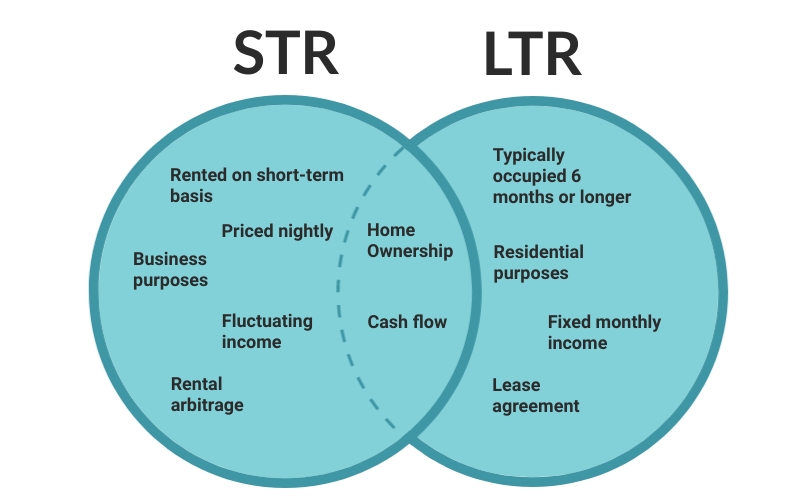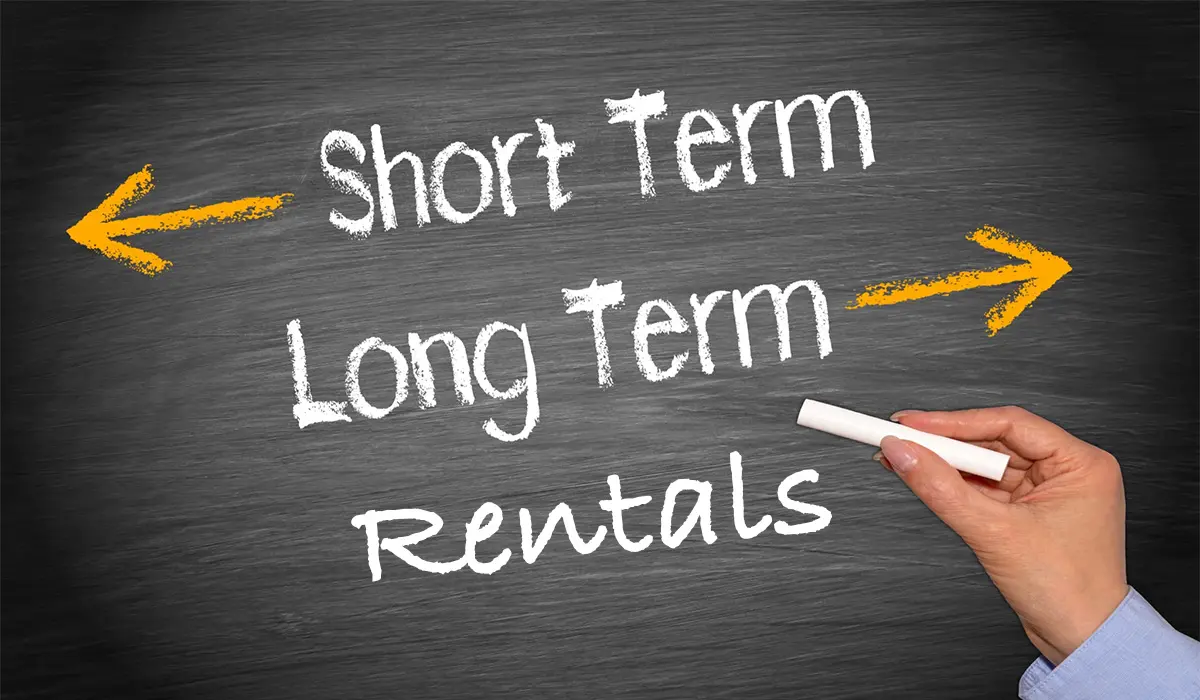So, you're on the hunt for a place to stay, huh? Whether you're looking for short-term rental solutions or something more long-term, it’s crucial to know what’s out there. The rental market can be a wild ride, but don’t stress—this guide is here to help you navigate it like a pro. We’ll dive deep into all the options, tips, and tricks to ensure you find the perfect spot that fits your budget and lifestyle.
Let’s face it, life happens, and sometimes you need a place to stay for just a few days, weeks, or even months. On the flip side, maybe you’re ready to settle down for a longer period. Either way, short-term and long-term rental solutions are booming, and understanding them could save you time, money, and headaches. Stick around, because we’re about to break it down for you.
From vacation rentals to fully-furnished apartments, there’s a lot to explore. In this article, we’ll cover everything you need to know about short-term and long-term rental solutions. We’ll also throw in some insider tips to help you make the right decision. So, grab a cup of coffee, sit back, and let’s get started!
Read also:Nadia Amine Onlyfans Leak The Untold Story You Need To Know
Understanding Short-Term Rental Solutions
What Exactly Are Short-Term Rentals?
Short-term rental solutions typically refer to accommodations rented for a limited period, usually ranging from a few days to a couple of months. These can include vacation homes, apartments, or even rooms in someone’s house. The appeal? Flexibility! If you’re traveling, working remotely, or just need a temporary place to stay, short-term rentals are a game-changer.
One cool thing about short-term rentals is the variety. You could snag a cozy cabin in the woods, a sleek downtown apartment, or even a beachfront villa. Plus, many come fully furnished with amenities like Wi-Fi, kitchen appliances, and sometimes even housekeeping services. Sounds pretty sweet, right?
Popular Platforms for Short-Term Rentals
There’s a whole world of platforms catering to short-term rental seekers. Airbnb, Vrbo, and HomeAway are some of the big names in the game. These platforms connect travelers with hosts offering unique properties worldwide. But wait, there’s more! You’ve also got Booking.com, which offers both hotels and short-term rentals, and Flipkey, another solid option for vacation rentals.
Each platform has its own vibe and features. For example, Airbnb focuses on unique and local experiences, while Vrbo leans more toward family-friendly vacation homes. Do your research to find the one that suits your needs best.
Long-Term Rental Solutions: The Big Commitment
What Defines a Long-Term Rental?
Long-term rental solutions generally mean renting a property for six months or more. Think apartments, houses, or even condos. Unlike short-term rentals, long-term leases often come with contracts that outline the terms, including rent, duration, and tenant responsibilities. This type of rental is ideal for those looking for stability and consistency in their living arrangements.
One of the perks of long-term rentals is that they tend to offer more space and privacy. Many also come with utilities included, which can simplify your monthly budgeting. Plus, you get to build a sense of community in your neighborhood, which is always a plus.
Read also:Livinia Roberts Onlyfans Leak The Full Story You Need To Know
How to Find the Right Long-Term Rental
Finding the perfect long-term rental takes a bit of legwork, but it’s worth it. Start by identifying your must-haves—location, size, amenities, and budget. Then, check out popular rental websites like Zillow, Apartments.com, and Rent.com. These platforms allow you to filter your search based on your criteria, making it easier to find exactly what you’re looking for.
Don’t forget to read reviews and check out the property in person if possible. It’s also a good idea to ask questions about the neighborhood, landlord policies, and any hidden fees. Being thorough now can save you a lot of trouble later.
Key Differences Between Short-Term and Long-Term Rentals
When it comes to short-term and long-term rental solutions, there are a few key differences to consider. For starters, short-term rentals usually offer more flexibility in terms of length and location. They’re perfect for travelers, digital nomads, or anyone needing a temporary place to stay. On the flip side, long-term rentals provide stability and often come with more space and amenities.
Another difference lies in the cost. Short-term rentals can be pricier per night, but they don’t require a long-term commitment. Long-term rentals, while usually cheaper overall, come with the added responsibility of a lease agreement. It’s all about what works best for your current situation and lifestyle.
Factors to Consider When Choosing Rental Solutions
Budget and Affordability
Your budget should be one of the first things you consider when choosing between short-term and long-term rental solutions. Short-term rentals might seem expensive at first glance, but they can be cost-effective if you’re only staying for a short period. Plus, many platforms offer discounts for longer stays.
For long-term rentals, affordability is key. You’ll want to make sure the rent fits comfortably within your budget, leaving room for other expenses. Remember, you’ll also have to factor in utilities, insurance, and any other associated costs.
Location and Accessibility
Location is everything, whether you’re opting for short-term or long-term rental solutions. Consider how close the property is to your workplace, schools, grocery stores, and other essential places. Accessibility to public transportation or major highways can also make a big difference in your daily commute.
For short-term rentals, location might be less of a priority since you’re only staying for a limited time. However, if you’re planning to work remotely, being in a central area could still be beneficial.
Legal Considerations and Lease Agreements
Understanding Lease Terms
Whether you’re signing a short-term or long-term lease, it’s crucial to understand the terms and conditions. For short-term rentals, these might be less formal, but you should still clarify any rules regarding check-in/check-out times, guest policies, and cancellation fees.
Long-term leases, on the other hand, are legally binding contracts. Make sure you read the fine print and understand everything from rent increases to maintenance responsibilities. It’s always a good idea to consult with a lawyer if you’re unsure about any part of the agreement.
Landlord and Tenant Rights
Both landlords and tenants have rights that should be respected. As a tenant, you have the right to a safe and habitable living environment. Your landlord should also respect your privacy and give proper notice before entering the property. In return, you’re expected to pay rent on time and maintain the property.
Knowing your rights and responsibilities can prevent misunderstandings and potential conflicts down the road. It’s always better to be informed and prepared.
Insider Tips for Renting Successfully
How to Negotiate Rent and Terms
Negotiating rent and lease terms is a skill that can save you a lot of money. For short-term rentals, you might be able to get a discount if you’re booking for an extended period. For long-term rentals, negotiating the rent or even asking for certain repairs to be done before moving in can be a smart move.
Be polite but assertive when negotiating. Highlight any positive qualities you bring to the table, like being a responsible tenant or having a good credit score. You’d be surprised how often landlords are willing to work with you.
Maintaining a Good Relationship with Your Landlord
Building a positive relationship with your landlord can make your rental experience smoother. Communicate openly and address any issues promptly. Paying rent on time and respecting the property go a long way in earning their trust.
Think of your landlord as a partner in your living situation. By fostering a good rapport, you create a win-win situation for both parties.
Data and Statistics on Rental Trends
According to recent studies, the demand for short-term and long-term rental solutions is on the rise. In 2022 alone, the short-term rental market was valued at over $100 billion globally. Meanwhile, long-term rentals continue to be a staple for many, with over 43 million renter-occupied households in the United States alone.
These numbers highlight the growing need for diverse rental options. As more people embrace remote work and flexible lifestyles, the rental market is adapting to meet these demands. Staying informed about these trends can help you make smarter rental decisions.
Conclusion: Making the Right Choice for You
Alright, so now you’ve got the lowdown on short-term and long-term rental solutions. Whether you’re looking for a temporary fix or a more permanent setup, there’s a rental option out there for you. Remember to consider factors like budget, location, and legal considerations before making your decision.
Don’t forget to leverage the tips we’ve shared to negotiate better terms and maintain a positive relationship with your landlord. And most importantly, trust your gut. After all, your home—whether short-term or long-term—should be a place where you feel comfortable and happy.
So, what’s next? Share your thoughts in the comments below. Let us know if you’ve had any memorable experiences with short-term or long-term rentals. And if you found this article helpful, feel free to share it with your friends and family. Until next time, happy hunting!
Table of Contents
- Understanding Short-Term Rental Solutions
- Long-Term Rental Solutions: The Big Commitment
- Key Differences Between Short-Term and Long-Term Rentals
- Factors to Consider When Choosing Rental Solutions
- Legal Considerations and Lease Agreements
- Insider Tips for Renting Successfully
- Data and Statistics on Rental Trends
- Conclusion: Making the Right Choice for You


